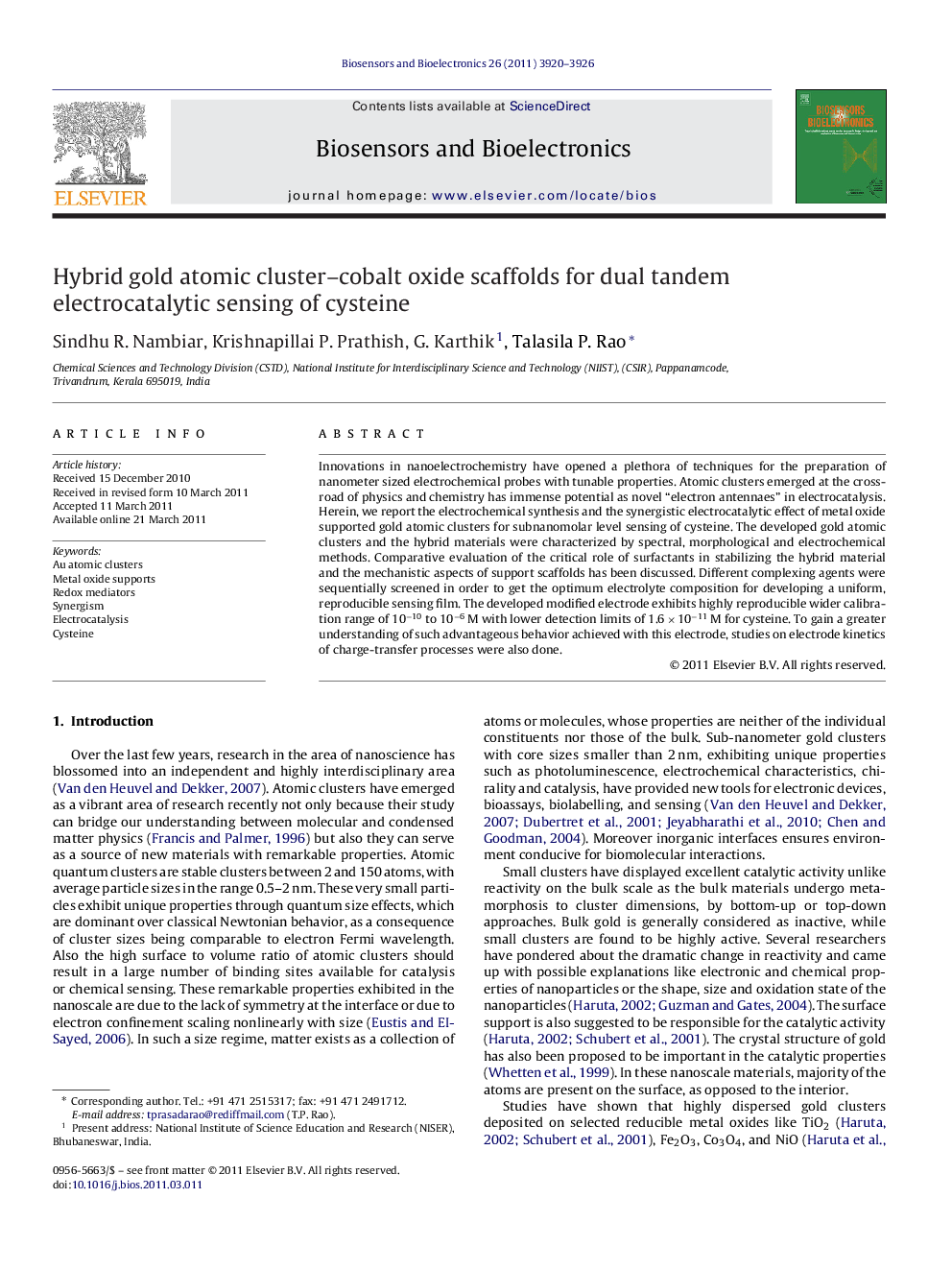| Article ID | Journal | Published Year | Pages | File Type |
|---|---|---|---|---|
| 867668 | Biosensors and Bioelectronics | 2011 | 7 Pages |
Innovations in nanoelectrochemistry have opened a plethora of techniques for the preparation of nanometer sized electrochemical probes with tunable properties. Atomic clusters emerged at the crossroad of physics and chemistry has immense potential as novel “electron antennaes” in electrocatalysis. Herein, we report the electrochemical synthesis and the synergistic electrocatalytic effect of metal oxide supported gold atomic clusters for subnanomolar level sensing of cysteine. The developed gold atomic clusters and the hybrid materials were characterized by spectral, morphological and electrochemical methods. Comparative evaluation of the critical role of surfactants in stabilizing the hybrid material and the mechanistic aspects of support scaffolds has been discussed. Different complexing agents were sequentially screened in order to get the optimum electrolyte composition for developing a uniform, reproducible sensing film. The developed modified electrode exhibits highly reproducible wider calibration range of 10−10 to 10−6 M with lower detection limits of 1.6 × 10−11 M for cysteine. To gain a greater understanding of such advantageous behavior achieved with this electrode, studies on electrode kinetics of charge-transfer processes were also done.
